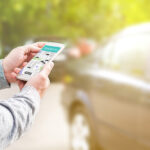 What is rideshare?
What is rideshare?
Rideshares such as Uber and Lyft are similar to taxi services. The difference is, rideshare drivers use their own cars. These services can be requested at any time day or night through an app on your phone. The cost for rideshare may be less than a taxi and easier to use. However, it’s important to know the risks of using rideshare and how to stay safe while riding.
Are there age restrictions?
Yes. Rideshare services do not allow riders under the age of 18 years old to create user accounts without adult supervision. This means, if the rider is under the age of 18 years old they must have someone 18 years or older riding with them.
What are some ways I can stay safe?
- Choose a safe place to wait for your ride. If possible, wait inside. If you must wait outside, chose an area that is well lit and heavily traveled.
- Check the ratings. Rideshare services have a rating system where riders can rate their drivers and leave comments. Be sure to read the reviews before you ride.
- Do a double check. All rideshare apps will send you: a description or photo of the driver, and make/model and license plate of the driver’s car. If the information doesn’t match perfectly, decline the ride and do not get in the car. Let the rideshare service know that the information they provided did not match the vehicle/driver that showed up.
- Do a triple check. After you complete your double check, ask the driver who they are picking up. Just like you have their name, they have yours too. Make sure it matches.
- Check the locks. When you open the door to get into the ride share, glance down at the door frame for a child lock, and make sure this is switched off so you can get out of the car in the event of an emergency.
- Chose the safest seat. If you’re riding alone, sit behind the passenger seat. This allows you to keep your eyes on the driver as well as the road.
- Buckle up. Wear your seatbelt just as you would if you were in your own car.
- Tell a friend. Share your ride information with a trusted friend or family member so they can track your location as you ride.
- Don’t over share. It’s totally fine to chat a bit with your driver, but you shouldn’t share personal information for safety reasons.
- 911 button- Both Uber and Lyft users have a panic button that will come up once their ride begins. For Uber the button is located in tab labeled “Safety Toolkit.” Lyft emergency button is located under the tab “Emergency Assistance.” Under both apps will display the make/model of the car, your location, and connect you with emergency services.
- Listen to your gut. If something doesn’t seem right, it most likely is not. For example, if you sense that your driver may have been drinking, don’t accept the ride! Call the Rideshare service and report what you observed.
It’s important to keep in mind that the safety regulations for rideshares here in the U.S. might be different or nonexistent in other countries. So pay attention and stay alert by following the safety tips listed above to make sure you ride safe.
Our health guides are developed through a systematic, rigorous process to ensure accuracy, reliability, and trustworthiness. Written and reviewed by experienced healthcare clinicians from Boston Children's Hospital, a Harvard Medical School teaching hospital and consistently ranked as a top hospital by Newsweek and U.S. News & World Report, these guides combine clinical expertise, specialized knowledge, and evidence-based medicine. We also incorporate research and best practices from authoritative sources such as the CDC, NIH, PubMed, top medical journals, and UpToDate.com. Clinical specialists and subject matter experts review and edit each guide, reinforcing our commitment to high-quality, factual, scientifically accurate health information for young people.
